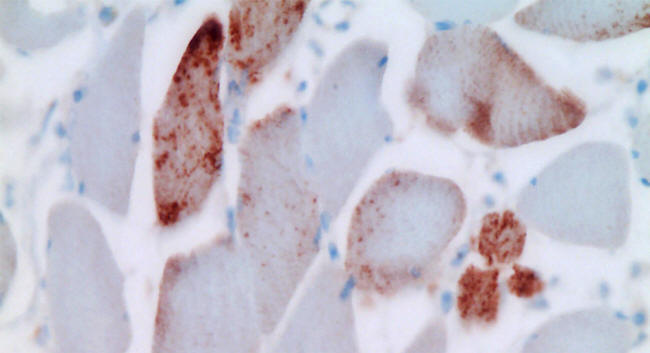|
(Shutterstock)
FLCCC Conference shares how to Treat It...
Marik and 15 other experts including,
...presented their research and findings.
Intended as an educational conference for health practitioners, the event attracted health providers cross-country, including Florida, New York, Texas, Washington, Virginia, and many more.
Several international doctors were also in attendance, including physicians from Australia and the Philippines. Endocrinologist Dr. Flavio Cadegiani from Brazil, was both an attendee and a presenter.
The conference was preceded by a sold-out networking dinner the night before, and was met with fervent enthusiasm by the attendees.
Post-vaccine injury syndrome is,
The condition does not fit a disease model, and therefore rather than targeting the symptoms, the entire body must be treated holistically.
Expression of spike protein in shoulder muscle after vaccine injection (Michael Palmer, MD, Sucharit Bhakdi, MD)
Spike Injury - A Multi-System Disease
Spike protein-induced diseases are diseases driven by a prolonged exposure to spike proteins.
Patients can be exposed to these spike proteins through infection (long COVID) or COVID-19 vaccination (post-vaccination injury syndrome).
Since the two conditions are both driven by the same stimulus, there is a high degree of overlap in mechanism and symptoms, often affecting multiple tissues and organs.
The spike proteins are small enough to travel in blood vessels. They are highly inflammatory, with strong evidence of autoimmunity and crossing the blood-brain barrier, and therefore can trigger disease in a host of systems and organs.
Cole presented biopsies that showed spike protein presence and inflammation in small blood vessels, muscles, heart muscles, brain tissue, lungs, spleen, and many more.
Most of the biopsies presented damaged cells that expressed only spike protein, rather than other SARS-CoV-2 proteins.
This suggests spike injuries are caused by vaccination and not natural infection, because in infection other SARS-CoV-2 proteins including nucleocapsid proteins are present in addition to the spike protein.
Cole's findings fed into Marik's lecture on symptoms and treatment options for long COVID and post-vaccine injury syndrome.
Evaluating React19 survey data from people suspecting vaccine injuries, Marik found the most common symptoms of spike protein-induced diseases.
This included,
Dr. Paul Marik's slides presented at the FLCCC Conference in Orlando Florida. (Courtesy of the FLCCC)
However, because most patients complain of an extensive list of symptoms not found in any disease,
Marik said that many patients are thus referred to psychiatric specialties rather than physicians who understand and can treat their disease.
Resveratrol is a compound found in the skin of grapes, blue and purple berries, and dark chocolate, that helps plants resist disease and environmental stressors. (Danijela Maksimovic/Shutterstock)
Treatment Options
Apart from Ivermectin and Spermidine, Marik recommended low-dose Naltrexone, a common drug for overdose in narcotic users.
While some medical practitioners have complained about having Ivermectin prescriptions monitored, naltrexone is a drug not on the radar.
Research has shown that in low doses naltrexone could reduce inflammation, which is a main driver of spike protein disease, and also reduce common symptoms including brain fog and neuropathic symptoms.
Though these drugs are highly effective, Marik, Kory, and many doctors encouraged personalized and patient-focused medicine where dosage and regimen are adjusted based on the patient's symptoms and needs.
Kory listed six different treatment strategies for spike protein-induced diseases.
The six strategies are:
Dr. Pierre Kory's slides presented at the FLCCC conference in Orlando, Florida (Courtesy of the FLCCC)
Each strategy implemented combinations of different drugs and treatments.
Based on the patient's symptoms, he would prescribe different treatments.
For example,
Clearing Out Spike Protein
To clear out spike protein, FLCCC doctors recommended drug and lifestyle implementations to improve autophagy.
Autophagy is a natural cellular process where old cell parts are broken down and reused, which could help to clear out spike protein from the body.
Recommended lifestyle changes include:
Alternative Treatments
Many alternative treatments were also discussed to improve cell repair and reduce inflammation...
Dr. Paul Harch focused on hyperbaric oxygen therapy, a repair treatment where a person is exposed to pressurized air that contains a higher concentration of oxygen.
Harch has been using this therapy to treat chronic wounds, including long-time brain injuries, by reducing inflammation.
In 2017, Harch co-authored a paper on reversing brain injury in a drowned toddler. After 40 sessions of hyperbaric oxygen treatment with Harch, her brain injury made a near-reversal.
Research has shown that increases in oxygen concentration reduces inflammation, and an increase in pressure increases inflammation.
A balance between oxygen and pressure can reduce the action of inflammatory cytokines and boost wound repair.
Harch added in Q&A that oxygen therapy can help with brain damage from lack of oxygen at birth.
Dr. Asher Milgrom, CEO of AMA Regenerative Medicine & Skincare Inc., through a pre-recorded video offered options of ozone therapy to improve mitochondrial dysfunction - a common driver of fatigue.
Since the mitochondria use oxygen to make energy, having an extra oxygen atom can improve energy production and alleviate fatigue.
Cancer treatments are becoming more personalized. (Shutterstock)
Rebuilding to Personalized Patient-Focused Medicine
Marik said that the FLCCC's first conference is a first step in their mission to rebuild the healthcare system back to personalized, patient-focused medicine - which is also the center of their treatment approach when it comes to spike protein-induced diseases.
Marik and Kory expect future conferences will be held, with the earliest expected in 6 months.
|







